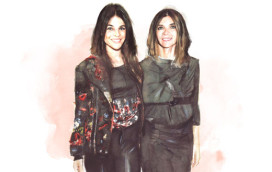In 1571 Queen Elizabeth I of England was given the most advanced timepiece ever created. It was a small clock that could be worn on the wrist. In 2015 Tim Cook, the CEO of Apple, presented what he referred to as “the most advanced timepiece ever created” to the world. It was a small clock that could be worn on the wrist.
Both Elizabeth’s “arm watch” and Cook’s Apple Watch are marvels of miniaturization. And yet youngsters of the iPhone generation might take one look at the queen’s mechanical bauble and wonder what the fuss was about. It could not, they might point out, respond to voice commands, measure its wearer’s heart rate, function as a contactless credit card or alert the sovereign to incoming emails – all of which Apple’s state-of-the-art gizmo can do, and more.
“Wearable technology” has come a long way. And the sector is set to go a great deal farther. How big might the boom be? According to Lisa Calhoun, founder of Write2Market, a technology PR firm, “Wearable tech is currently an $8 billion industry, projected to hit $50 billion in the next five years. With a change in image, the industry could accelerate and possibly even surpass that potential for growth.”
The wearables market is dominated by smartwatches and health- and fitness-related devices. At least in the short term these will remain the two biggest categories. When wearable fitness-monitoring devices created by companies such as Nike, Fitbit, Intel and Jawbone emerged a few years ago – measuring steps taken, calories burned, heart rate, skin temperature and sleep quality – they seemed to represent a move towards what has been termed “the quantified self”. In 2015 and beyond, expect to see further moves in the same direction, including motion-tracking socks and underwear, light-reactive jackets that glow in response to exertion, wireless devices for scanning blood-sugar levels, and shoes that can help runners manage their pace and navigate unfamiliar streets.
Meanwhile, other applications are being found for wearable technology. Car-makers are developing apps that will let people unlock and start their cars remotely using their smartwatches and phones. Airlines are investigating how wearable technology might help streamline the check-in process. Anxious parents can attach devices that use GPS technology to curious toddlers with a tendency to wander off. And sun-lovers can avail themselves of bracelets that monitor desired tan levels and swimwear that changes color to warn them when they are in danger of going from tanned to burnt.
Indeed, the point at which technology and fashion intersect is one in particular to keep an eye on. “In five to ten years’ time, all the little gadgets we have to carry around – like mobile phones, cameras or bracelets – will disappear and everything will be integrated into a garment,” speculates Francesca Rosella, creative director of CuteCircuit, which is at the cutting edge of fashionable wearable technology. CuteCircuit made its name with a “hug shirt” that mimics the sensation of being embraced when someone with the corresponding app sends the shirt’s wearer a text message. The brand is also known for its miniskirts and dresses that glow and switch between patterns, which have been shown off to striking effect by celebrity fans such as Katy Perry and Nicole Scherzinger.
But so far the highest-profile mainstream fashion label to express a keen interest in wearable technology is Ralph Lauren. Last year it launched the Polo Tech, a tightly fitted sports shirt that monitors heartbeat, breathing and stress levels. That data gets sent from the shirt to an app via a detachable Bluetooth-enabled box. (The shirt itself is fine in the washing machine; the box loaded with delicate biometric circuitry is not.) “The technology has evolved to a point where it can now be synthesized with clothing,” said David Lauren, Ralph’s son and the brand’s executive vice-president, on the occasion of the launch. “The goal now is to merge it into all kinds of clothing. It will be mind-blowing five years from now.”
Although the number of wearable devices is growing every day, the majority of consumers remain fitness fanatics. Yet studies also show that wearable fitness-trackers are apparently not as compelling as smartphones, with many users admitting to losing interest in and even abandoning their new toys after a short while.
On a technical level, another factor limiting the attractiveness of many wearable devices is their typically short battery life and inability to function unless connected to a nearby smartphone. With so many electronic gadgets to juggle already, why should consumers want to buy more – especially when their phones can already do practically everything wearables can?
Another obstacle is that eternal and, for the manufacturers of consumer goods, maddeningly unpredictable quirk of human nature: the perception of what is and is not cool. The rejection of Google Glass, smartglasses that overlay data and augmented imagery on what the wearer is looking at through their spectacle lenses, is a case in point. In principle, Google Glass is an exciting idea, and it seems likely that the technology will prove useful in industrial settings, making it easier, for example, for warehouse workers to locate and handle stock. But ordinary consumers were allergic to the product, perceiving it as not only creepy and intrusive but also, and most damningly, uncool.
Wearable technology’s true believers predict a future in which electronic devices worn on the wrist or neck will become part of every area of our daily lives, serving as a form of ID, allowing us to shop, navigate and communicate, as well as to gather and interpret data on our personal activity and wellbeing; in short, to provide what technologists call a “persistent digital identity”. We are certainly well on the way. But we have not quite arrived there yet. Elizabeth I’s arm watch is not entirely obsolete, after all.



